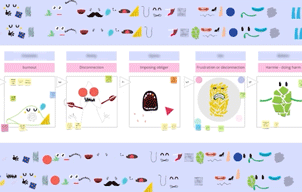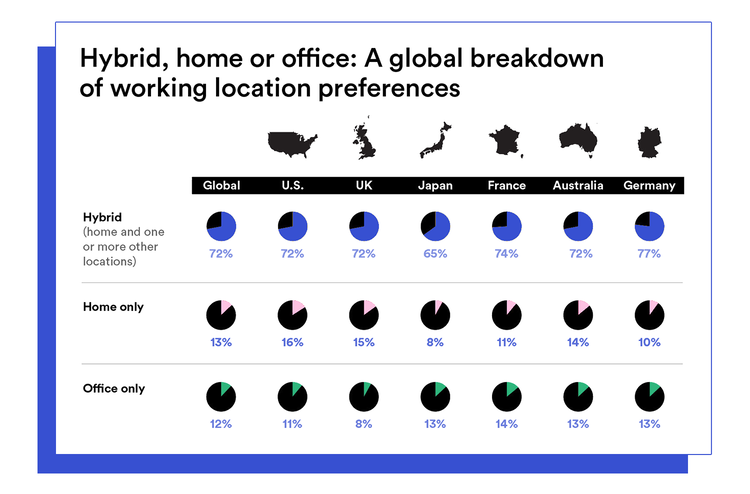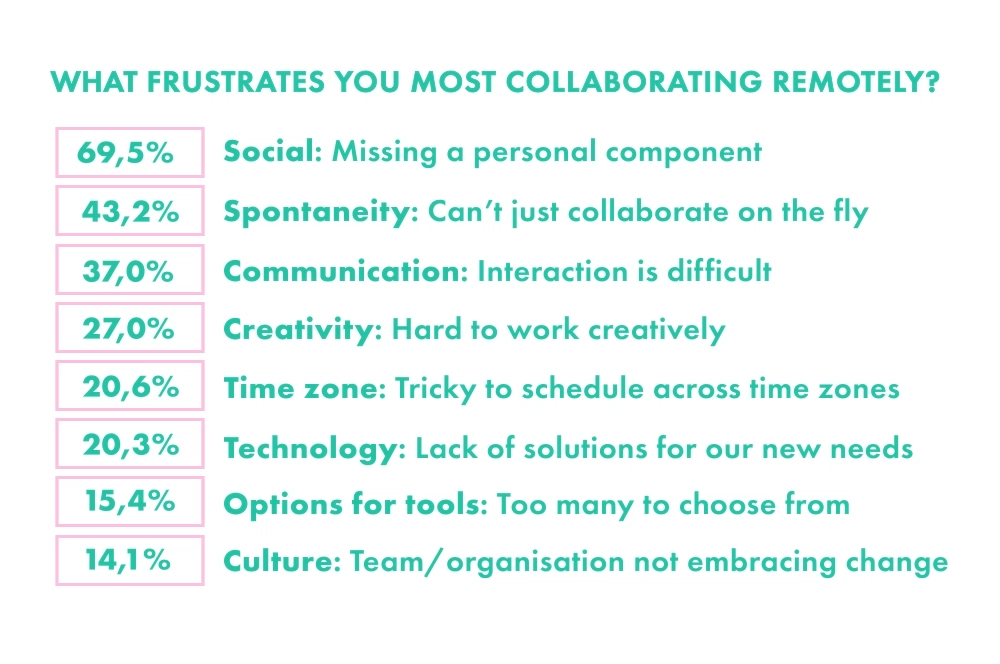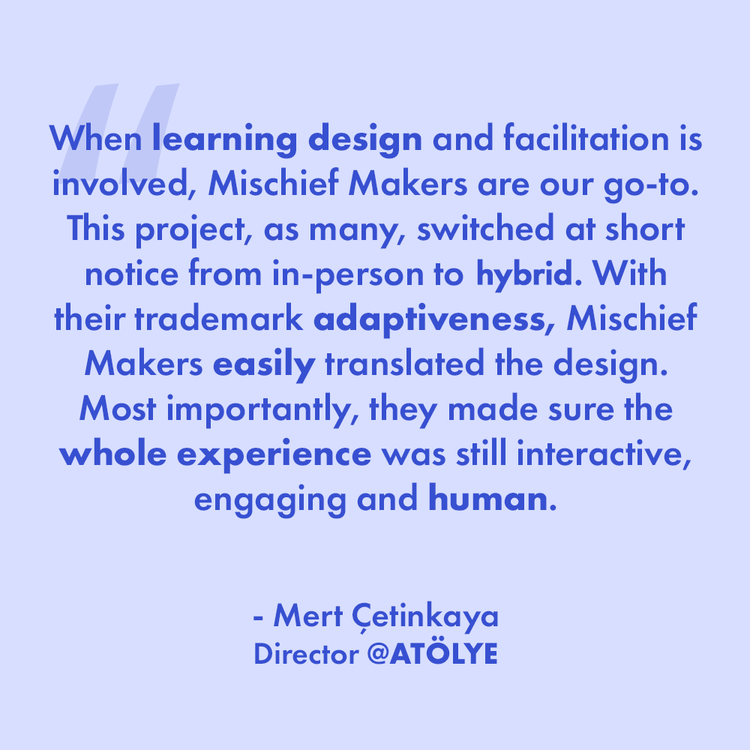Hybrid Series
Over the last week in August 2021, we shared a series of hybrid tips and tricks to tame hybrid nerves on our social media channels. Here we have summarised the hybrid series for you to get insights!
What does your hybrid monster look like?
Is Hybrid really here to stay?
Let’s talk tech
Fostering Connection in Hybrid Teams
Case Study Lessons Learned
All about the hybrid Facilitation Course
1. What does your hybrid monster look like?

As we all transition to another new normal of hybrid meetings and culture, this massive shift can bring up a lot of uncertainty, stress, and even “Sunday scaries”.
Hybrid meetings are ones where part of the group joins remotely and the other part joins in-person. Just like a hybrid car uses 2 sources of power, a hybrid meeting uses 2 modes of participation 💡. Bringing the two groups together for a shared, hybrid experience takes a lot more effort than just ensuring attendance either on-site or online.
Designing for hybrid meetings forces facilitators to be even more intentional about the space, the technology, the feelings of belonging and connection, and much MUCH more. In a recent meet up with “L&D Shakers” we put a name and image to our hybrid fears.
Emotional intelligence expert, Marc Brackett, teaches us “you have to name it to name it!” and we certainly have started to!
This about it: what does your hybrid monster look like? And how might you be able to face it and tame it?
2. Is Hybrid really here to stay?

Let’s see what the research says. 👇
A 2020 Slack survey of more than 9,000 workers showed that across the globe, the preference is hybrid! (see image below). Flexible working spaces allow employees to prioritize and spend more time on valuable work. In fact, MURAL found that 64% of workers would forgo a $30K raise to continue WFH. 🤯
Work Trend Index's 2021 survey confirms the benefits are not just for employees since 66% of leaders noted they are planning to accommodate hybrid work environments with a space redesign.
Whether you're ready for it or not, hybrid is here and likely to stay!
The good news is that it does come with a lot of benefits:
🤩 94% of employers noted higher or similar levels of productivity within hybrid/remote teams.
🤩 Hybrid can be a cost effective solution since businesses lose about $600B to in-office distractions
🤩 Hybrid allows for events to be spread out over weeks or months. This supports learning principles of providing more space and time to digest the material and also can prevent burnout which typically happens in the build up to a large 1 time in-person event.
🤩Hybrid meeting are sustainable and eco-friendly! No need to burn fossil fuels in planes when Zoom can beam us into-breakout rooms!
3. Let’s Talk Tech

Whether you love it or hate it, technology can make it or break it...your hybrid experience, that is!
When planning your hybrid event, it is essential to take careful consideration with the tech bits in order for the session to be fully accessible for both online and offline participants.
Here is a list of tech essentials for hybrid meetings:
✔ External Camera(s) - Make sure you opt for a moveable camera ideally with a built-in microphone for those on-site. Bonus points if you welcome that moving camera in as an additional participant 😃 (We call ours Mike & Michelle!)
✔ External Mic & Speakers - Consider a 360° microphone to make sure everyone spread around the room is heard easily by those online.
✔ A screen/tv/projector to ‘bring in’ the online participants to the onsite room. It is essential not only for the online attendees to see those in-person, but also for the group onsite to see and feel connected to all those online.
✔ Cables & Converters - with all the additional equipment, expect to tape the many cables and converters to the floor to ensure no one is hurt!
4. Fostering Connection in Hybrid Teams

MURAL asked this question to 403 individuals and 70% of them noted the lack of interaction and missing out on social gatherings. 🤯
In the hybrid environment, it is easy to see a division between those in-person and online.
As facilitators, it’s crucial to intentionally design hybrid meetings to foster more connection, belonging, inclusion and psychological safety. Without that intentionality sometimes you can do more harm than good.
Therefore here are our tip mischievous tips to cultivate connection in hybrid spaces:
🎯 Have co-pilots! Instead of having 1 facilitator coordinate 2 spaces, set up your team to have 1 main facilitator online, another 1 in-person, and then 2 support facilitators in both spaces depending on the complexity of the event.
🎯 Ping Pong Conversation! Make sure to pass the talking stick back and forth between the online and offline groups. Be explicit with who will start first to avoid confusion or 1 space talking more than another.
🎯 Create hybrid breakouts! There’s no reason to always split up online and offline! Ask onsite participants to bring laptops to enable more intimate hybrid conversations with mixed virtual breakout rooms.
5. Case Study Lessons Learned

At Mischief Makers we are a firm believer that seriously awesome results do not require serious behaviour ⚡️
We’ve had great success in our mischievous hybrid methods and approaches, with the broadest range of clients. Case and point; the UAE Government.
In collaboration with IDEO and ATÖLYE, we facilitated a hybrid design sprint on human-centred design for 25 UAE government employees.
The team was split between 4 countries and required support to effectively prepare and facilitate this event, both virtually and on the ground.
We:
co-created
mapped and clustered research
ran collective creativity exercises
played hybrid energizers
had world class speakers give remote talks
… and much more.
With careful intention, our hybrid approach succeeded to:
✅ Adopt human-centered design mindsets and skills, practising them in the context of the UAE government and complex systems
✅ Establish foundations for impact by framing problems conducting research immersed in community
✅ Understand unmet human needs, translating into opportunities for impactful design
✅ Prototype solutions, to test within communities and iterate based on feedback
✅ Present compelling narratives to PMO leadership
...all despite, overcoming - and more importantly embracing the geographical distance of the attendees.
6.All about the hybrid Facilitation Course
The world of work is shifting to hybrid and facilitation is one of the most in-demand skills needed to make team work work… Online, offline or hybrid!
Since early last year, we’ve been paving the way for facilitators on what is possible to experience in a hybrid setting! We’re currently in our 5th cohort of our hybrid Facilitation Course “Leading Groups” and have trained 80 graduates from 22 countries to increase their facilitation confidence online, offline, and in hybrid settings.✨🌍
This course is 8 weeks and includes a mix of:
💥 Online & hybrid sessions
💥 holistic approach to facilitation (not only tools but also mindsets, knowledge, frameworks, techniques etc.)
💥 interactive and experience-based learning
💥 asynchronous + blended learning (several different touchpoints & formats to learn in)
💥 and putting learning into practice by facilitating for a real client!
If you are in a role where you work with or lead people and teams, this course is for you! You’ll be joining and working with a group of international, multidisciplinary participants; bouncing off perspectives and learning with one another! 🤩
Are you ready to become a Mischief Maker and skill up in the new world of work with us? 👇
COLLABORATION & THE FUTURE OF WORK: A GUIDE TO WORKING BETTER ANYWHERE
Curated resource with practical activities, tools, templates, frameworks, and thought-provoking articles, to fuel your enthusiasm to try out new ways of working hassle-free.
Read about how we process your information in our privacy policy. You have the right to object to certain processings of your personal data. Check your rights in the privacy policy for more information.